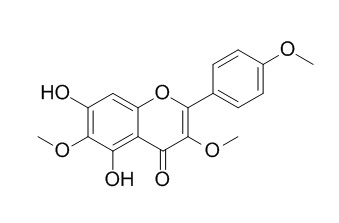Santin
Reference standards.
Inquire / Order:
manager@chemfaces.com
Technical Inquiries:
service@chemfaces.com
Tel:
+86-27-84237783
Fax:
+86-27-84254680
Address:
1 Building, No. 83, CheCheng Rd., Wuhan Economic and Technological Development Zone, Wuhan, Hubei 430056, PRC
Providing storage is as stated on the product vial and the vial is kept tightly sealed, the product can be stored for up to
24 months(2-8C).
Wherever possible, you should prepare and use solutions on the same day. However, if you need to make up stock solutions in advance, we recommend that you store the solution as aliquots in tightly sealed vials at -20C. Generally, these will be useable for up to two weeks. Before use, and prior to opening the vial we recommend that you allow your product to equilibrate to room temperature for at least 1 hour.
Need more advice on solubility, usage and handling? Please email to: service@chemfaces.com
The packaging of the product may have turned upside down during transportation, resulting in the natural compounds adhering to the neck or cap of the vial. take the vial out of its packaging and gently shake to let the compounds fall to the bottom of the vial. for liquid products, centrifuge at 200-500 RPM to gather the liquid at the bottom of the vial. try to avoid loss or contamination during handling.
Molecules.2024, 29(22):5260.
Planta Med.2016, 82(13):1208-16
JPC-Journal of Planar Chromatography2023, 36:179-190
Molecules.2023, 28(16):6025.
Food Chem.2020, 327:126992.
Food Chem Toxicol.2023, 176:113802.
Oncol Rep.2019, 41(4):2453-2463
Molecules.2020, 25(23):5636.
Int Immunopharmacol. 2020, 83:106403.
Applied Biological Chemistry 2022, 65,5(2022).
Related and Featured Products
Revista Brasileira De Farmacognosia, 2008, 18(3):360-366.
A proposal for the quality control of Tanacetum parthenium (feverfew) and its hydroalcoholic extract.[Reference:
WebLink]
In this study, we present a proposal for the physical and chemical quality control of the powder of the species T. parthenium (feverfew) and its hydroalcoholic extract obtained by percolation.
METHODS AND RESULTS:
The sesquiterpene lactone parthenolide, the main active compound of this plant, was quantified by HPLC and its content was found to be 0.49% in the powder and 1.06% in the extract. The total content of flavonoids, determined by UV spectroscopy, was found to be 0.54% in the powder and 1.05% in the hydroalcoholic extract. Santin, the main flavonoid of this species, was isolated and further identified in the extract by HPLC. Since parthenolide can also be found in other Asteraceae species, the analysis of Santin is important to certify the authenticity of the plant material.
CONCLUSIONS:
The results confirmed the authenticity of the plant material and the efficiency of the extraction procedure.



